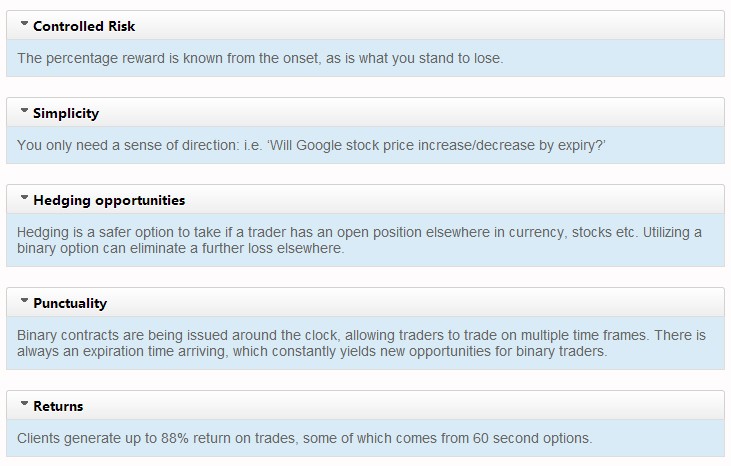Stock Options v Options The Futures Advantage Traders Log
Post on: 2 Май, 2015 No Comment

Posted By: TradersLog
Why Equity Option traders should consider adding Futures Options to their Portfolios
If you are reading this seminar, I am about to make several assumptions about you. I am assuming you are somewhat of an experienced investor who has already “paid some dues” on the market battlefield. I am assuming that you are experienced enough that you have already discovered on your own the inherent logic of writing option premium and have possibly already joined the somewhat elite investor circle that actively employ the strategy. I am assuming that you are somewhat comfortable with a certain degree of risk, as long as you understand it and know how to manage it. I am assuming that you either currently sell equity options for profit or are considering it. Finally, I am assuming that you are seeking an investment that can offer consistent returns in 2008’s lackluster and/or volatile investment sectors.
If I have made any incorrect assumptions, please don’t feel left out. This information may benefit you as well. However, if you are already taking advantage of the large percentage of options that expire worthless in the equities arena, you might find the advantages of applying this same strategy to futures can be an awakening of sorts. Think of selling options on futures contracts like the S&P, Euro, Coffee or Crude Oil to be just like selling equity options, on steroids. Higher risk? It depends. Higher returns? You be the judge. Lets take a look at the benefits and drawbacks of selling premium in the futures market.
If you’re already selling options on equities, you already know the game. The majority expire worthless. Time is always on your side. Entry and exit points don’t have to be precise. You don’t have to guess short term market direction. The same remains true in futures, with a few key differences.
- Lower Margins: A key factor that attracts many stock option traders to futures. Margins posted to hold short stock options can be 10 to 20 times the premium collected for the option. With the SPAN margin system used in futures, options can be sold with out of pocket margin requirements* for as little as 1 to 1 ½ times premium collected. For instance, you sell an option for $600 and post a margin of $900*. * Total margin requirement minus premium collected.
- Attractive premiums can be collected for far out of the money strikes . Unlike equities, where to collect any worthwhile premium, options must be sold 1-3 strike prices out of the money, futures options can often be sold at strike prices far out of the money where adverse short term market moves will not adversely affect the position, yet time value erosion may be allowed to work less impeded by short term volatility. How far out of the money? Ask anybody who sold June $80 crude oil puts in March or June 1700 Gold calls when Gold broke through 1000.

- Liquidity . Many equity option traders complain of poor liquidity hampering their efforts to enter or liquidate positions. While some futures contracts have higher open interest than others, most of the major contracts like Financials, Sugar, Coffee, Grains, Energies, etc. have substantial volume and open interest offering several thousand open contracts per strike price.
We are not bashing equity options. Quite the contrary. Many investors have achieved substantial returns with a properly managed option selling approach in equities. Our point is to make equity traders aware that there is another vehicle with similar (in some cases, more desirable) properties that is available for diversification. Gaining higher leverage can carry increased risk in some situations, but at the same time provide for higher returns in an option portfolio.
Like writing equity options, futures options selling can be approached in an aggressive or conservative manner. Trading plans can range from an aggressive, more leveraged approach to a conservative, lower risk approach. On the whole, however, futures option investors are in it for a higher return than those sought by the average equity option trader.
Example
August Soybean Put Sales
With higher energy costs affecting every country in the world, many are expecting biofuel production to continue to increase. This has brought a bull market to grains and oilseeds. In March of 2008, however, it became evident that US farmers were switching wheat and corn acreage over to soybeans in order to take advantage of higher soy prices (soybeans had outperformed corn and wheat to this point). The market corrected on this news. However, as soybean prices fell, corn and wheat prices began to rise to adjust to lower projected plantings. As this happened, some farmers began shifting acreage back to corn and wheat, bringing buying back into the soybean market.
In investor wanting to take advantage of the longer term demand story in grains and oilseeds could have used this correction to sell August $8.00 soybean puts below the market for premiums in the $500 range. He would have put up a margin of about $1000 per option to do so. If soybeans are anywhere above $8.00 in July (August option expiration) the investor would reap about a 50% return on his invested margin in about 3 ½ months.
One does not need to be an equity options trader to invest in futures options or a managed futures options portfolio. However, if you are already familiar with stock options, you may want to consider the benefits of diversifying into commodities options. A commodities option portfolio can not only offer diversification but also substantially lower margins and offer far out of the money strikes for the investor seeking to add a slightly more aggressive edge to his overall holdings.
James Cordier is the founder of Liberty Trading Group/OptionSellers.com. an investment firm specializing in managed option writing portfolios. James’ market comments are published by several international financial publications and worldwide news services including The Wall Street Journal, Reuters World News, Bloomberg Television News and CNBC. Michael Gross is an analyst with Liberty Trading Group/OptionSellers.com. Mr. Cordier’s and Mr. Gross’ book, The Complete Guide to Option Selling (McGraw-Hill 2005) is available at bookstores and online retailers now.














